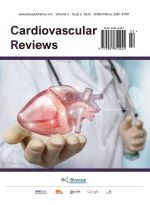Abstract
Background: Brugada Syndrome (BrS) has been extensively studied over the last 30 years, warranting a review of its research landscape, including prevalent themes and potential future directions. Objective: By employing bibliometric analysis, this work seeks to map the current state and trajectory of BrS research, highlighting key contributors and unexplored areas while suggesting avenues for future studies which could propel the field forward. Methods: This paper analyzed BrS-related articles from 1992 to 2023, extracted from the Web of Science core collection, using tools like CiteSpace, VOSviewer, Pajek, and Scimago Graphica to examine research output, geographies, authors, affiliations, keywords, and citation patterns. Results: Out of 3,713 BrS publications, the US has been the most prolific, with the Netherlands producing the highest caliber work, and China ranking fourth in output. The University of Amsterdam emerged as the leading institution. Pedro Brugada topped the author list. The journal Circulation led in citations, with an impact factor of 37.8, indicative of its JCR Q1 status and elite ranking. Keyword analysis revealed ‘Brugada syndrome’ (2756), ‘Sudden death’ (1387), and ‘St-segment elevation’ (1200) as common terms, with ‘Management,’ ‘Guidelines,’ ‘Consensus conference,’ and ‘Genetics’ as up-and-coming topics. Conclusions: Stable research funding and publication rates indicate a mature phase for BrS research, with genomics, proteomics, biomarkers, clinical prediction models, and gene therapy poised as future focal points.
References
Brugada P, Brugada J, 1992, Right Bundle Branch Block, Persistent ST-Segment Elevation and Sudden Cardiac Death: A Distinct Clinical and Electrocardiographic Syndrome. Journal of the American College of Cardiology, 20(6): 1391–1396.
Moras E, Gandhi K, Narasimhan B, et al., 2023, Genetic and Molecular Mechanisms in Brugada Syndrome. Cells, 12(13): 1791.
Barc J, Tadros R, Glinge C, et al., 2022, Genome-Wide Association Analyses Identify New Brugada Syndrome Risk Loci and Highlight a New Mechanism of Sodium Channel Regulation in Disease Susceptibility. Nature Genetics, 54(3): 232–239.
Adler A, Rosso R, Chorin E, et al., 2016, Risk Stratification in Brugada Syndrome: Clinical Characteristics, Electrocardiographic Parameters, and Auxiliary Testing. Heart Rhythm, 13(1): 299–310.
Hosseini SM, Kim R, Udupa S, et al., 2018, Reappraisal of Reported Genes for Sudden Arrhythmic Death: Evidence-Based Evaluation of Gene Validity for Brugada Syndrome. Circulation, 138(12): 1195–1205.
Yuan M, Guo Y, Xia H, et al., 2021, Novel SCN5A and GPD1L Variants Identified in Two Unrelated Han-Chinese Patients with Clinically Suspected Brugada Syndrome. Frontiers in Cardiovascular Medicine, 2021(8): 758903.
Chen GX, Barajas-Martínez H, Ciconte G, et al., 2023, Clinical Characteristics and Electrophysiologic Properties of SCN5A Variants in Fever-Induced Brugada Syndrome. EBioMedicine, 2023(87): 104388.
Brugada J, Campuzano O, Arbelo E, et al., 2018, Present Status of Brugada Syndrome. Journal of the American College of Cardiology, 72(9): 1046–1059.
Aziz HM, Zarzecki MP, Garcia-Zamora S, et al., 2022, Pathogenesis and Management of Brugada Syndrome: Recent Advances and Protocol for Umbrella Reviews of Meta-Analyses in Major Arrhythmic Events Risk Stratification. Journal of Clinical Medicine, 11(7): 1912.
Nademanee K, Chung FP, Sacher F, et al., 2023, Long-Term Outcomes of Brugada Substrate Ablation: A Report from BRAVO (Brugada Ablation of VF Substrate Ongoing Multicenter Registry). Circulation, 147(21): 1568–1578.
Conte G, Sieira J, Ciconte G, et al., 2015, Implantable Cardioverter-Defibrillator Therapy in Brugada Syndrome: A 20-Year Single-Center Experience. Journal of the American College of Cardiology, 65(9): 879–888.
Wu L, Peng J, Li B, 2020, Brugada Syndrome: Traditional Understanding and Updates. Journal of Clinical Electrocardiology, 29(3): 161–170.
Pappone C, Brugada J, Vicedomini G, et al., 2017, Electrical Substrate Elimination in 135 Consecutive Patients with Brugada Syndrome. Circulation-Arrhythmia and Electrophysiology, 10(5): 803–809.
Chen Y, Chen C, Liu Z, Hu Z, Wang X, 2015, The Methodological Functions of CiteSpace Knowledge Maps. Studies in Science of Science, 33(2): 242–253.
VOSviewer: Visualizing Scientific Landscapes, viewed February 27, 2024, https://www.vosviewer.com//.
Antzelevitch C, Brugada P, Borggrefe M, et al., 2005, Brugada Syndrome: Report of the Second Consensus Conference: Endorsed by the Heart Rhythm Society and the European Heart Rhythm Association. Circulation, 111(5): 659–670.
Miyazaki T, Mitamura H, Miyoshi S, et al., 1996, Autonomic and Antiarrhythmic Drug Modulation of ST-Segment Elevation in Patients with Brugada Syndrome. Journal of the American College of Cardiology, 27(5): 1061–1070.
Dumaine R, Towbin J, Brugada P, et al., 1999, Ionic Mechanisms Responsible for the Electrocardiographic Phenotype of the Brugada Syndrome are Temperature Dependent. Circulation Research, 85(9): 803–809.
Behr ER, Savio-Galimberti E, Barc J, et al., 2015, Role of Common and Rare Variants in SCN10A: Results from the Brugada Syndrome QRS Locus Gene Discovery Collaborative Study. Cardiovascular Research, 106(3): 520–529.
Makarawate P, Glinge C, Khongphatthanayothin A, et al., 2020, Common and Rare Susceptibility Genetic Variants Predisposing to Brugada Syndrome in Thailand. Heart Rhythm, 17(12): 2145–2153.
Ciconte G, Monasky MM, Santinelli V, et al., 2021, Brugada Syndrome Genetics is Associated With Phenotype Severity. European Heart Journal, 42(11): 1082–1090.
Pinsach-Abuin ML, Del Olmo B, Pérez-Agustin A, et al., 2021, Analysis of Brugada Syndrome Loci Reveals That Fine-Mapping Clustered GWAS Hits Enhances the Annotation of Disease-Relevant Variants. Cell Reports Medicine, 2(4): 100250.
Honarbakhsh S, Providencia R, Garcia-Hernandez J, et al., 2021, A Primary Prevention Clinical Risk Score Model for Patients with Brugada Syndrome (BRUGADA-RISK). JACC Clinical Electrophysiology, 7(2): 210–222.
Probst V, Goronflot T, Anys S, et al., 2021, Robustness and Relevance of Predictive Score in Sudden Cardiac Death for Patients with Brugada Syndrome. European Heart Journal, 42(17): 1687–1695.
Morales MA, Piacenti M, Nesti M, et al., 2021, The BrAID Study Protocol: Integration of Machine Learning and Transcriptomics for Brugada Syndrome Recognition. BMC Cardiovascular Disorders, 21(1): 494.
Sun Y, Su J, Wang X, et al., 2023, Patient-Specific iPSC-Derived Cardiomyocytes Reveal Variable Phenotypic Severity of Brugada Syndrome. EBioMedicine, 2024(95): 104741.
Theisen B, Holtz A, Rajagopalan V, 2023, Noncoding RNAs and Human Induced Pluripotent Stem Cell-Derived Cardiomyocytes in Cardiac Arrhythmic Brugada Syndrome. Cells, 12(19): 2398.
Liantonio A, Bertini M, Mele A, et al., 2023, Brugada Syndrome: More than a Monogenic Channelopathy. Biomedicines, 11(8): 2297.
Li Y, Dinkel H, Pakalniskyte D, et al., 2023, Novel Insights in the Pathomechanism of Brugada Syndrome and Fever-Related Type 1 ECG Changes in a Preclinical Study Using Human-Induced Pluripotent Stem Cell-Derived Cardiomyocytes. Clinical and Translational Medicine, 13(3): e1130.
